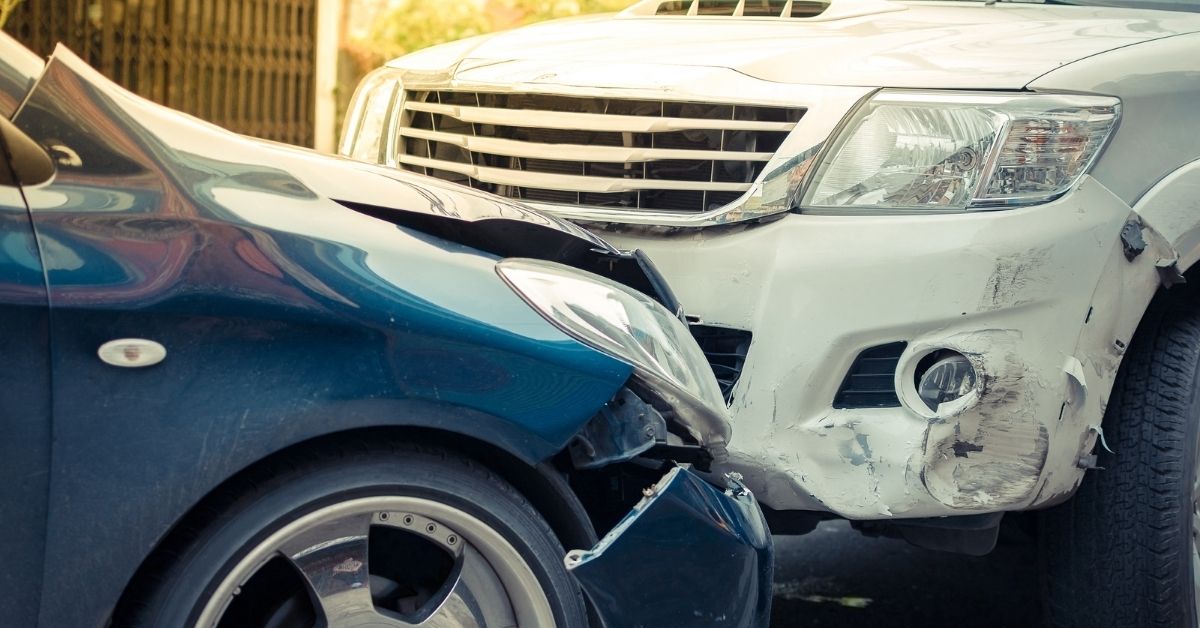How Car Insurance Claims Work: A Step By Step Guide
- Car Insurance
- by Arnulfo Gonzalez
- May 18, 2021
Confused by how car insurance claims work when your car is damaged, and whose insurance policy/company will cover the damage? We prepared a simple step-by-step guide that will help you navigate the process of filing a car insurance claim and get what you’re owed out of it.
How car insurance claims work depending on whose fault it is
An accident that is your fault
When you get into an accident that is your fault, you need to file a claim with your own insurance company. Your collision insurance will cover the damage to your car. Your liability insurance will cover the damage to the other car. In fact, the other driver will file a claim with your insurance company for the damage you caused to their car.
An accident that is the other driver’s fault
If you got into an accident that is the other driver’s fault, you must file a claim with the other driver’s insurance company. The damage will be covered by his/her auto liability insurance.
An accident where it’s both drivers’ fault or the fault is unclear

When you get into an accident where it’s both drivers’ fault or the fault is unclear, you need to file a claim with both our insurer and the other driver’s insurer. Fault will be then determined by the adjusters and you’ll be covered by one or both policies.
An accident where the other driver is uninsured/underinsured
If you got into an accident where the other driver is uninsured/underinsured, you should file a claim with your own insurance company. The damage will be covered by your uninsured/underinsured motorist policy if you have it.
If your car is vandalized, stolen or damaged by weather
When you need to be compensated for damage caused by your car being vandalized, stolen or damaged by weather, you need to file a claim with your insurance company. The damage will be covered by your comprehensive insurance.
How car insurance claims work – what you need to do step by step
Step 1: Call 911
If the accident resulted in people being hurt or cars being damaged over a certain amount that varies by state (in Texas, the amount is $1000), you need to call 911 and report the accident. Receiving care for any injuries must be everyone’s first concern. Moreover, having a police officer assess the accident and fault will be useful in the next step (your insurance claim).
Step 2: Contact your insurance agent/company
You need to contact your insurance agent or company as soon as possible after the accident. Do this as you wait for the police officer to get to the scene. The information you need to be able to provide is:
- Which insured car was involved in the accident
- Time and place of the accident
- Who was driving when the accident happened
- A rough description of the accident and of the resulting damage
- Information about the other driver: name of the driver and his/her insurance information
- Names and contact information of anyone else involved in the accident. Same goes for witnesses.

When you contact the insurer, and if the call results in you filing a claim, make sure you can write down the claim number you are given, and the name and phone number of the person you talked to.
How much time do I have to file a claim?
Reporting an accident to your car insurance company and filing a claim may be two different things. Most insurers recommend that you report the accident “right away”. However, the total amount of damage or the gravity of injuries may not be apparent right away. So, state laws mandate the amount of time you can wait to file the actual claim. In Texas, you may have up to 2 years, both for personal injury claims and property damage claims. Make sure you verify this information with your insurer.
Also, keep in mind that even if you file your claim within the legal timeframe, the later you file it within this timeframe, the more difficult it will be to provide evidence, so make sure you document everything about the accident as soon as possible.
Step 3: Communicate with the insurance adjuster

After you filed the claim with the insurance company, they will assign an adjuster to your case. The adjuster will contact you to get complete details of the accident. Make sure you describe the facts as accurately as possible when discussing with the adjuster.
Provide any photos or videos you may have taken after the accident, as they will be useful to assess the damage. Also keep in mind that your conversation with the adjuster will be recorded.
If the claim you are filing is for personal injury, and you are filing it with the other driver’s insurance company, it might be a good idea to contact an attorney before this step.
After gathering information about the accident, the adjuster will either inspect your car or have it taken to a certified repair shop to be inspected.
Step 4: Get an evaluation
Once the damage assessment is complete, the adjuster will issue an evaluation report. The insurance company may issue an initial payment at this stage.
Step 5: Claim resolution and final payment

The final step is completed when the adjuster authorizes the final payment for your claim. At this point, you will sign a release and you will accept the payment as “payment in full” for your claim.
Keep in mind that this is a general description of the step. Procedures may vary slightly, depending on your insurer and your state. Make sure you discuss this step thoroughly with your insurer.
How car insurance claims work with deductibles
A deductible is an amount that you will have to pay out of pocket for the damage before the insurance company starts paying its part. You choose the deductible when you sign the insurance policy. For example, your policy has a $500 deductible, and the damage to your car is assessed at $2000. The insurance company will pay $1500 for the damage, and you will pay $500 out of pocket.
How car insurance claims work with future premiums
In most cases, a car insurance claim will make your future insurance premiums go up. This happens even if the accident was not your fault. The reason is that insurance companies will see you as a high risk due to circumstances surrounding accidents. They assume that if you were involved in an accident, it is more likely that it will happen again in the future.
There is only one situation in which your rates don’t go up after an accident. That is, when your insurer doesn’t have to pay any money for it. In practice, this means the accident was not your fault, and the damage is covered by the other driver’s insurance policy.
Conclusion
All in all, a car insurance claim is a straightforward process. To make sure you are paid what you are owed, you need to document as many details as possible, and communicate openly with your insurance company and with the authorities.
If you have any further questions about how car insurance claims work in your specific situation, don’t hesitate to ask us in the comments.
And last but not least, if you found this article useful, share it with the people who might need it and follow us for more tips on all things insurance and money management!

